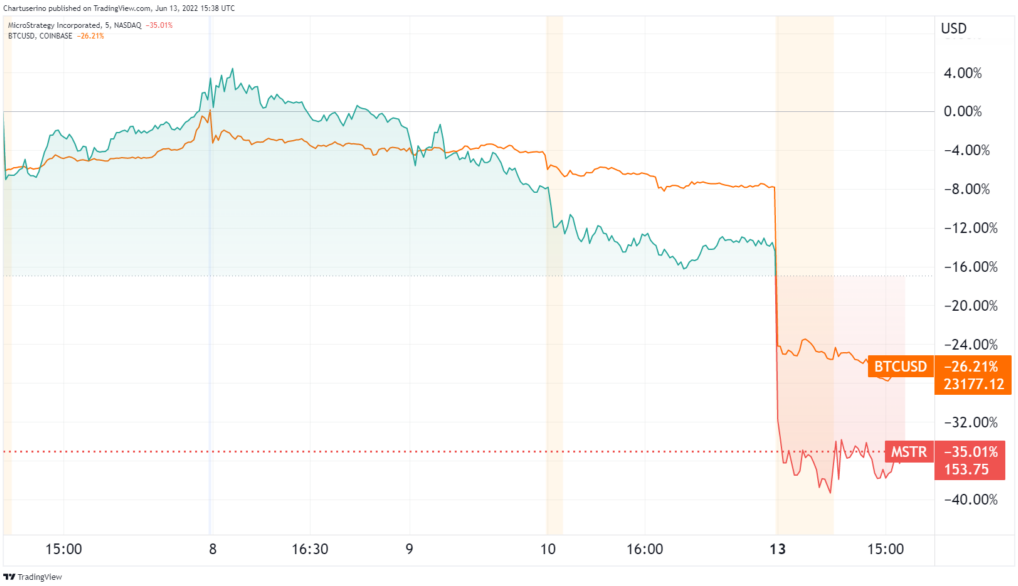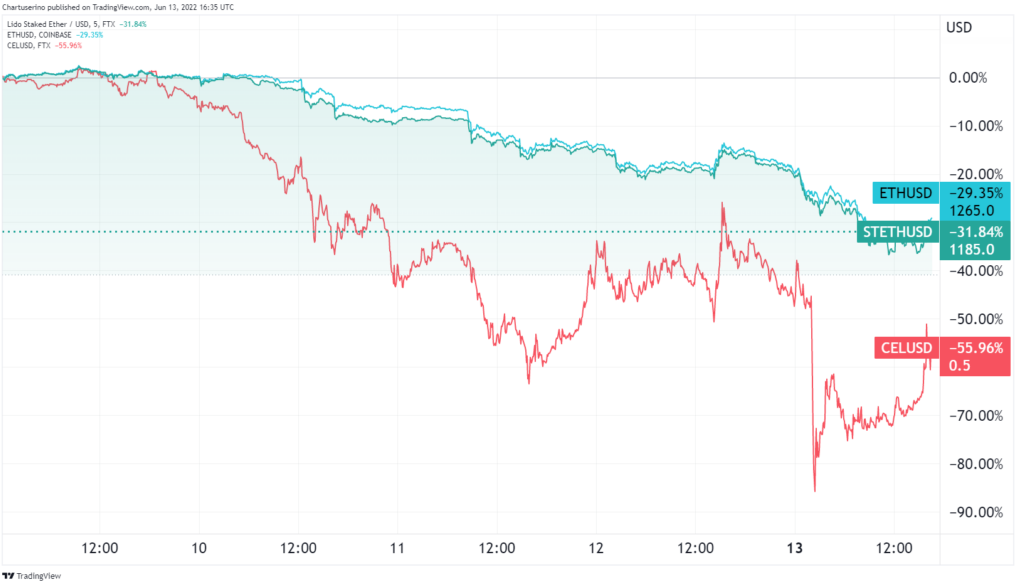MicroStrategy's Bitcoin strategy was hailed as bold, but the company comes under fire as all markets come crashing down.
Since Friday, the global cryptocurrency market cap shrunk by -22%, from $1.24 trillion to $960 billion. This represents a return to the January 2021 crypto market environment and a -66% shrinkage from the ATH last November at $2.9 trillion.
Consequently, companies that have invested their fortunes into the market are having a bad time. As one of the largest corporate holders of Bitcoin, MicroStrategy (NASDAQ:MSTR) shares dropped even steeper.
MicroStrategy Down 35% In Last 5 Days
Compared to Bitcoin’s decline by -26%, MSTR went down by -35% in the last 5 days, the lowest since November 2020.

Source: Trading View
The reason for this discrepancy is simple—Michael Saylor’s strategy revolves around using Bitcoin as debt collateral. As of April, his company accumulated 129,218 bitcoins.

Source: @Tier10k
With Bitcoin price reverting to early 2021, generating a $713 million loss, there is now a distinct possibility of a margin call if BTC plummets further under $25k and into the $21k range.
If the market downturn persists, MicroStrategy would have to make an additional loan. This will likely come from Silvergate Bank which had already issued it a $205 million loan in March.
Why Is The Crypto Market Crashing?
While such a steep market downturn may be panic-inducing, the good news is that nothing new is happening. At least, nothing that is delivering a fundamental realignment. In fact, one could say that the crypto market’s growth is to blame.
Specifically, the evolution of the market from simple spot trading to derivatives trading. The latter tends to be more speculative and prone to liquidations. This is especially true for leveraged margin trading, a financial tool that is exceedingly risky to use, but it also tends to short circuit sound reasoning because of the potential gains involved:
- Using borrowed funds to make a bet against an asset, such as shorting.
- Boosting those borrowed funds with an X leverage.
- This allows traders to enter market positions as big players.
- Accordingly, if their market bets turn true, they win big. And if they don’t, they suffer losses that pull in other market participants.
One of the pulled ramps for this type of trading is borrowing/lending platforms like Celsius Network, the most popular CeFi platform serving 1.7 million investors. It is no coincidence that the platform ceased all account transfers amid the market crash.

Last August, the company reported having $20.3 billion in assets under management (AuM). Since then, this value dropped to $12 billion as of May. In less than a week, the company’s official line on the state of its liquidity shifted drastically. On June 7, Celsius posted a confident assurance dubbed under “Damn the Torpedoes, Full Speed Ahead:”
Celsius has one of the best risk management teams in the world. Our security team and infrastructure is second to none. We have made it through crypto downturns before (this is our fourth!).
Celsius Network blog
However, not only is Celsius the largest staker of stETH (pegged to ETH) via the Lido liquid staking platform for Ethereum, but its own CEL token is crashing. These two ingredients are critical to support the platform’s generous high yield returns.

Source: Trading View
To exacerbate the situation further, the crypto market is in the middle of a milestone, as Ethereum transitions into proof-of-stake. As the largest dApp host and smart contract platform, it suffered another delay which had a suppressive effect on Ethereum’s price—directly affecting Celsius.

In short, the cryptomarket’s complexity is catching up to it. Multi-layered and inter-connected liabilities—staking, borrowing, derivatives trading—triggered a liquidity rush. In turn, this triggered a selloff cascade for those not even participating in those activities, but are merely short-term Bitcoin holders.
Of course, the prime trigger, to begin with, is the Federal Reserve’s interest rate hike, as the central bank tries to undo quantitative easing that generated the highest inflation rate since December 1981. In the end, all the factors end up feeding each other into a state of high fear and anxiety that impedes rational decision-making.
